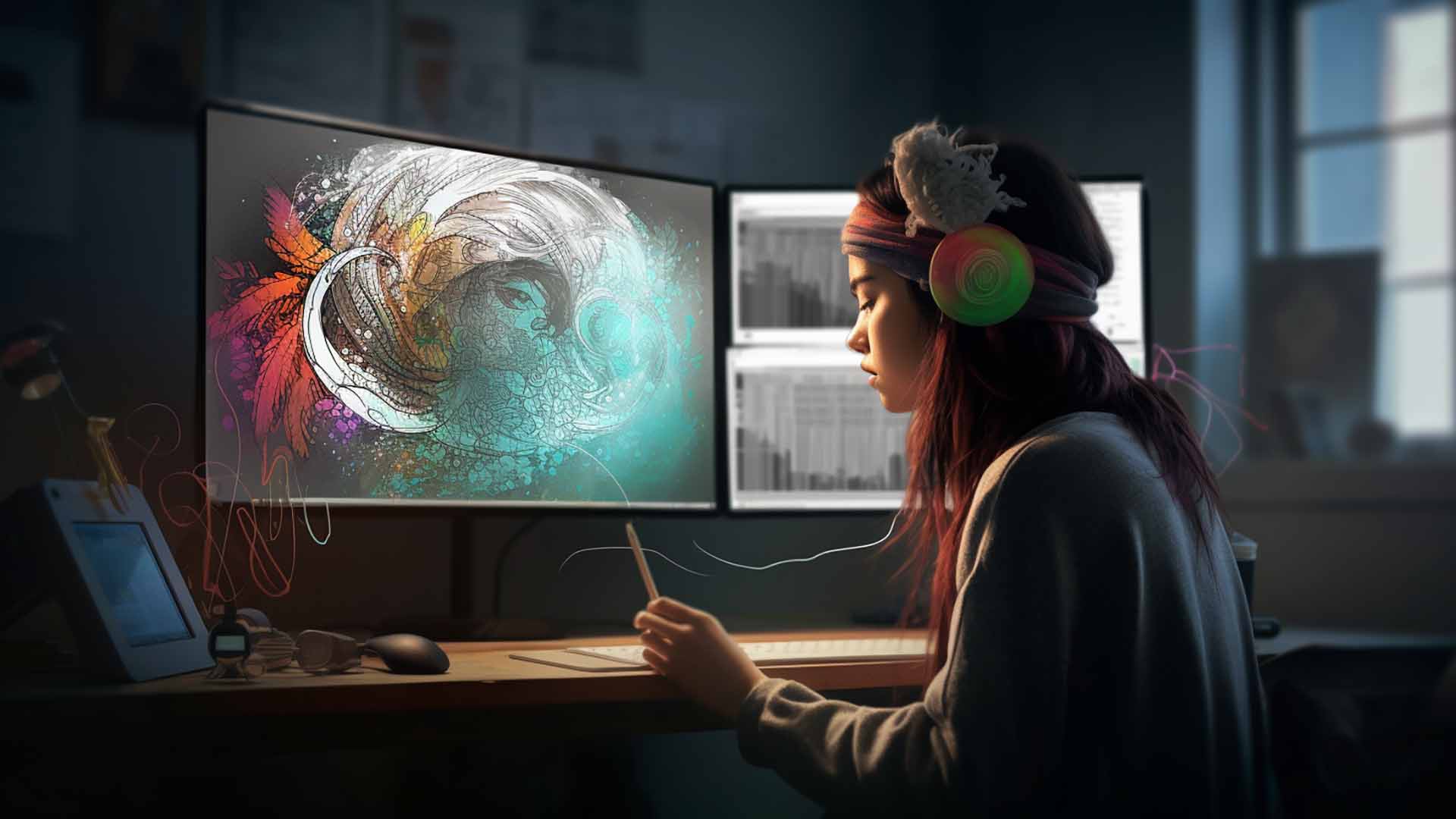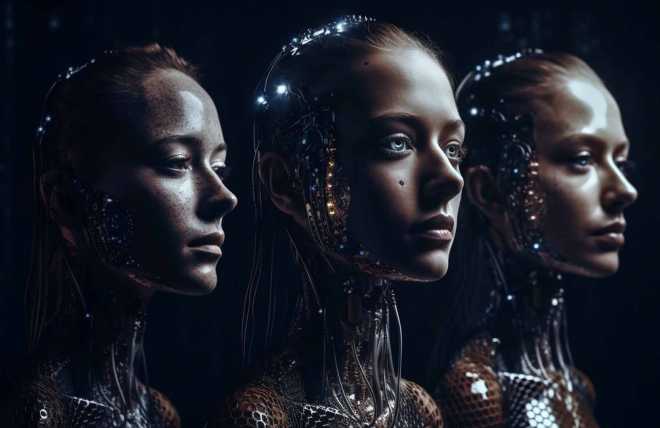The Power of AI-Generated Creativity with ChatGPT
Discover the Future of AI-Generated Content with ChatGPT
ChatGPT and Creativity: AI-generated Content for Writing, Art, and Music
Introduction
The world of artificial intelligence (AI) has been rapidly evolving over the last few years, and one area that has seen a significant impact is the creative industry. ChatGPT is a large language model trained by OpenAI, based on the GPT-3.5 architecture, and it has contributed significantly to the field of AI-generated content. ChatGPT has been trained on a massive amount of text data and can generate human-like responses, making it an excellent tool for generating content in writing, art, and music. In this blog post, we will explore how ChatGPT contributes to these creative industries, the benefits, and potential pitfalls.
I. ChatGPT and Writing
ChatGPT has made significant contributions to the field of writing. Writing is a time-consuming and challenging process that requires creativity, focus, and a deep understanding of language. ChatGPT can assist writers with tasks such as generating blog posts, fiction and non-fiction writing, screenwriting, and editing and proofreading.
I.I Blog post generation
ChatGPT can generate content for blog posts by analyzing the topic and generating a summary. Bloggers can use this generated summary to create a post or use it as an inspiration for their content. This feature saves time and effort and can be used to produce a large amount of content quickly.
I.II Fiction and non-fiction assistance
ChatGPT can assist writers in generating story ideas, character development, and plot twists. It can also be used to generate non-fiction content, such as news articles, product descriptions, and other types of informative content.
I.III Screenwriting and script generation
ChatGPT can generate scripts and screenplays based on specific genres and themes. This feature is useful for writers who are struggling to come up with ideas or need inspiration for their writing.
I.IV Editing and proofreading
ChatGPT can also assist writers with editing and proofreading by analyzing the text for grammatical errors, sentence structure, and readability. This feature can help writers save time and improve the overall quality of their work.
I.V Ethical considerations and potential pitfalls
Despite the benefits of using AI in writing, there are potential ethical considerations and pitfalls. Plagiarism and originality concerns are one of the main issues. As AI models like ChatGPT have access to vast amounts of text data, there is a risk that generated content may be too similar to existing content, leading to copyright issues.
Another concern is AI biases in language generation. AI language models like ChatGPT are trained on large datasets, which can contain inherent biases. Therefore, generated content may reflect these biases, leading to issues like discriminatory language.
I.VI Examples and case studies
One excellent example of ChatGPT's contribution to the writing industry is the AI writing assistant, shortly AI. It is an AI-powered writing tool that uses the GPT-3 model to generate content. It can assist with tasks like blog post writing, content marketing, and copywriting.
II. ChatGPT and Art
ChatGPT's contribution to the field of art is fascinating. Visual art is an area that many people do not associate with AI, but ChatGPT has been trained to assist artists with tasks such as concept development, collaborative art generation, image description, and art critique.
II. I Concept development
ChatGPT can assist artists with concept development by generating ideas and providing inspiration. This feature can help artists overcome creative blocks and generate new and innovative ideas.
II. II Collaborative art generation
ChatGPT can be used to create collaborative art projects by generating pieces based on input from multiple artists. This feature can help artists create unique and diverse pieces that they may not have been able to create alone.
II. III Image description and art critique
ChatGPT can analyze and describe images, making it a useful tool for art critique. It can provide detailed analysis of artwork, pointing out strengths and weaknesses, and suggesting improvements. This feature is useful for artists who want to improve their craft and receive constructive criticism.
II. IV The intersection of AI and traditional art techniques
AI-generated art has created new and innovative art styles that were not possible before. ChatGPT can be used to create digital art, combining traditional art techniques with AI-generated art styles.
For example, a British artist, Anna Ridler, used GPT-2 to generate a dataset of text about tulips, which she then used to create a series of AI-generated prints. The prints were then colored and refined by hand, creating a unique hybrid between traditional and AI-generated art.
II. V Examples and case studies
Another example of ChatGPT's contribution to the art industry is the AI art generator, Artbreeder. Artbreeder uses a combination of neural networks to generate unique and original art pieces. Users can select different parameters, such as style, color, and texture, to generate a personalized art piece.
III. ChatGPT and Music
AI-generated music is another area where ChatGPT has made significant contributions. Music composition is a complex and time-consuming process that requires a deep understanding of music theory, chord progressions, and melody structures. ChatGPT can assist musicians with tasks such as lyric generation, melody and chord progression suggestions, and music analysis.
III. I Lyric generation
ChatGPT can generate lyrics based on specific themes, styles, and genres. Musicians can use this feature to generate new and innovative lyrics or overcome writer's block.
III. II Melody and chord progression suggestions
ChatGPT can suggest chord progressions and melodies based on specific themes and styles. This feature is useful for musicians who are struggling to come up with ideas or need inspiration for their music.
III. III Music analysis and review
ChatGPT can analyze and review music pieces, pointing out strengths and weaknesses and suggesting improvements. This feature is useful for musicians who want to improve their craft and receive constructive criticism.
III. IV The future of AI-generated music
The future of AI-generated music is exciting, and ChatGPT is at the forefront of this innovation. Personalized music and AI-assisted live performances are two areas where ChatGPT's contribution is expected to grow.
III. V Personalized music
AI-generated music can be personalized to specific tastes, preferences, and moods. ChatGPT can be used to generate music that reflects the listener's personality, creating a unique and personalized music experience.
III. VI AI-assisted live performances
ChatGPT can assist musicians during live performances by generating backing tracks, suggesting chord progressions and melodies, and even generating lyrics on the fly. This feature can enhance the overall music experience for both musicians and listeners.
III. VII Examples and case studies
One example of ChatGPT's contribution to the music industry is the AI music platform, Amper Music. Amper Music uses AI-generated music to create unique and original music pieces. Musicians can use the platform to create personalized music for their projects.
IV. The Future of ChatGPT and Creativity
The potential for interdisciplinary collaborations between AI and traditional creative industries is immense. Upcoming developments in AI-generated content are expected to be exciting and innovative, but it is essential to address ethical concerns and potential pitfalls.
The importance of human-AI collaboration cannot be overstated. AI-generated content is a tool to assist creatives and not to replace them. Therefore, it is essential to maintain a balance between human creativity and AI-generated content.
V. Conclusion
In conclusion, ChatGPT has made significant contributions to the creative industry, assisting writers, artists, and musicians in their respective fields. It has proven to be a powerful tool for generating content and enhancing the overall creative experience. However, there are potential ethical concerns and pitfalls that must be addressed to ensure that AI-generated content remains a tool to assist creatives and not replace them.
The future of AI-generated content is exciting, and ChatGPT is at the forefront of this innovation. The potential for interdisciplinary collaborations between AI and traditional creative industries is immense. Upcoming developments in AI-generated content are expected to be exciting and innovative, but it is essential to address ethical concerns and potential pitfalls.
The importance of human-AI collaboration cannot be overstated. AI-generated content is a tool to assist creatives, not replace them. Therefore, it is essential to maintain a balance between human creativity and AI-generated content.
As the creative industry continues to evolve, the role of AI-generated content is likely to grow. ChatGPT and other AI language models will continue to play a significant role in assisting creatives in generating content and enhancing their overall creative experience. However, it is important to ensure that the creative industry remains human-centered, and that the ethical concerns and potential pitfalls of AI-generated content are addressed.
The intersection between AI and creativity is where the magic happens. By leveraging the power of AI-generated content and combining it with human creativity, we can unlock new levels of innovation and creativity that were previously impossible.

AI-generated content is not about replacing human creativity but enhancing it.
Faq
- Q: Can ChatGPT replace human creativity?
A: No, ChatGPT is a tool to assist creatives, not replace them. The importance of human-AI collaboration cannot be overstated. - Q: Can AI-generated content be too similar to existing content?
A: Yes, there is a risk that generated content may be too similar to existing content, leading to copyright issues. - Q: Are there biases in AI language generation?
A: Yes, AI language models like ChatGPT are trained on large datasets, which can contain inherent biases. Generated content may reflect these biases, leading to issues like discriminatory language.
Pros and Cons
Pros:
- Saves time and effort in writing, art, and music
- Can generate new and innovative ideas
- Enhances the overall creative experience
- Provides personalized content
- Can be used to create collaborative art projects
Cons:
- Risk of plagiarism and copyright issues
- AI biases in language generation
- May not be suitable for all types of creative tasks
- Lack of originality and human touch
- Potential ethical concerns and societal impact
Resources
-
GPT-3 Playground - GPT-3 Playground is a web-based tool that allows users to experiment with the GPT-3 language model developed by OpenAI. It allows users to input text prompts and see how GPT-3 responds.
-
Artbreeder - Artbreeder is an AI-powered tool that allows users to create unique and original art pieces. Users can select different parameters, such as style, color, and texture, to generate a personalized art piece.
-
Shortly AI - Shortly AI is an AI writing assistant that uses the GPT-3 language model to generate content. It can assist with tasks like blog post writing, content marketing, and copywriting.
-
Amper Music - Amper Music is an AI music platform that allows users to create unique and original music pieces. Musicians can use the platform to create personalized music for their projects.
-
DeepDream - DeepDream is an online platform that uses deep learning algorithms to generate unique and surreal images. Users can upload their images and select different styles to create a personalized image.

